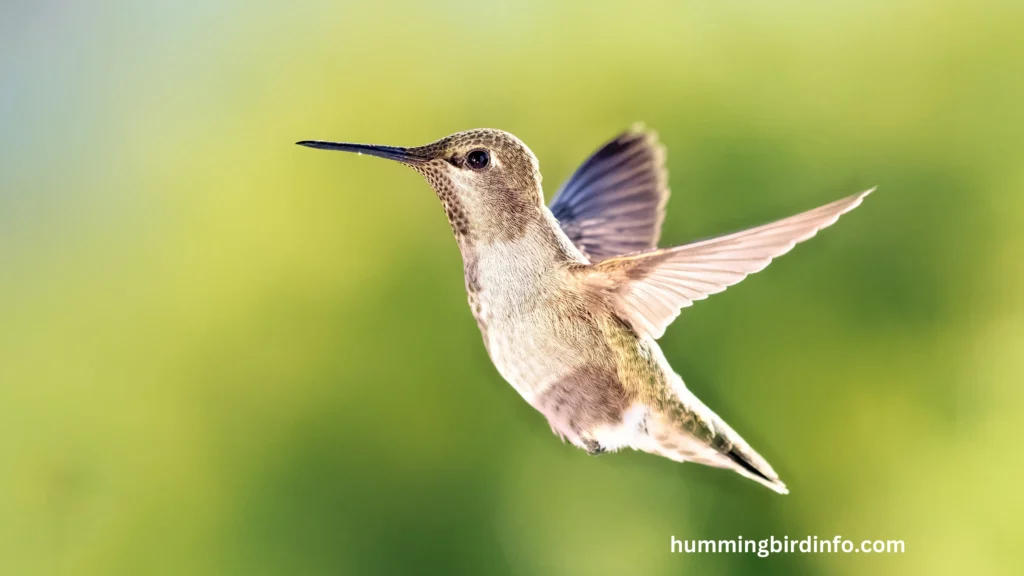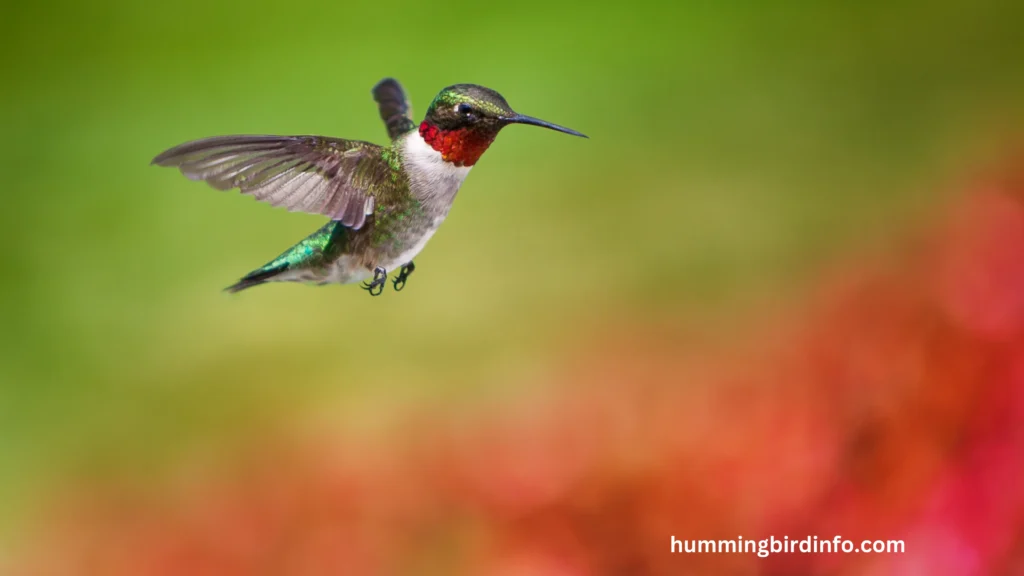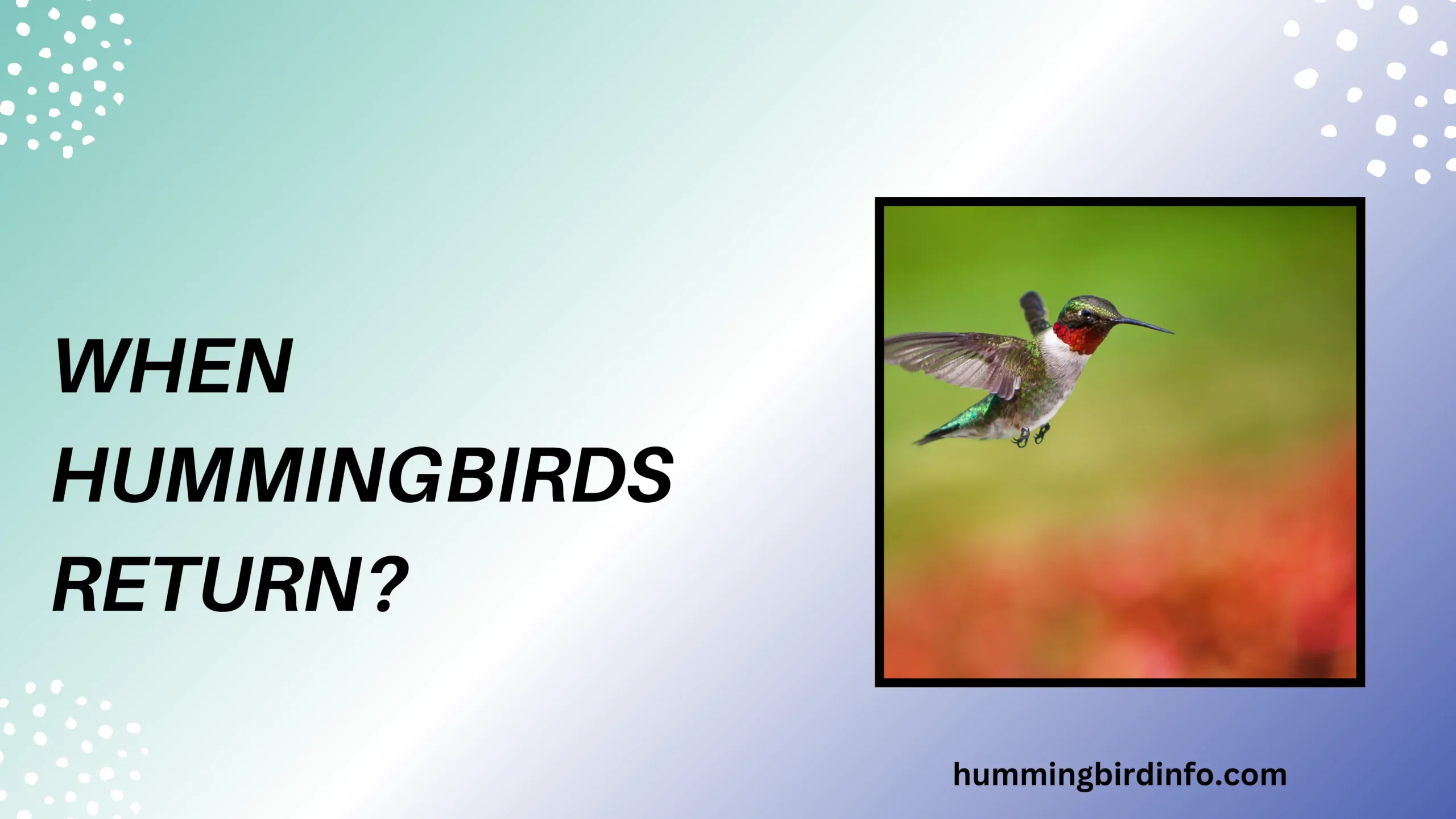Every spring, as the world around us bursts into color and life, a delicate spectacle unfolds in the skies and gardens: the return of hummingbirds.
These tiny jewels of nature, with their iridescent feathers and rapid wingbeats, signal more than just a seasonal change—they represent the renewal of life, the reawakening of ecosystems, and a fresh start for countless plants and animals.
Their arrival captivates bird watchers and nature lovers alike, sparking excitement and curiosity.
The return of hummingbirds is no random event; it’s a complex migration driven by biology and environment, timed to perfection with blooming flowers and warming days. Understanding when and why these birds come back helps us appreciate their incredible journey and the important role they play as pollinators.
For gardeners and wildlife enthusiasts, their return also offers an opportunity to prepare welcoming habitats and enjoy the delicate beauty hummingbirds bring.
This article explores the fascinating timing of hummingbird returns, the factors influencing their migration, the routes they follow, and how we can help them thrive.
Whether you live in the east or west, the mountains or the coast, knowing when hummingbirds arrive adds a spark of magic to spring’s awakening. Let’s dive into the world of these tiny travelers and discover the story behind their spectacular comeback.
Contents
- 1 The Timing of the Return — A Species-by-Species Look
- 2 The Triggers of Return — Environmental Cues and Internal Clocks
- 3 The Journey North — Routes and Challenges
- 4 Welcoming the Return — How to Help Hummingbirds Thrive
- 5 The Cultural and Ecological Significance of Their Return
- 6 Conclusion
- 7 FAQs
- 8 1. When do hummingbirds usually start to return in spring?
- 9 2. What factors influence the timing of their return?
- 10 3. Do all hummingbird species return at the same time?
- 11 4. How far do hummingbirds migrate?
- 12 5. How can I attract hummingbirds when they return?
- 13 6. Do hummingbirds return to the same location every year?
The Timing of the Return — A Species-by-Species Look
The Ruby-throated Hummingbird is the eastern harbinger of spring, arriving typically from late March in southern areas to late May in northern regions and Canada.
Their migration starts from Central America, often crossing the Gulf of Mexico in a non-stop flight, timed to coincide with early blooming flowers and warming temperatures. Their gradual northward arrival marks the true start of spring for many.

On the West Coast, the Rufous Hummingbird begins its journey as early as February, traveling along the Pacific Coast up to Alaska by May. These birds are experts at following the “bloom wave” of flowers, adjusting their pace based on flower availability and regional climates.
Their long migration emphasizes adaptation to coastal resources and a staggered arrival schedule.
Further south along California’s coast, Allen’s Hummingbird arrives early, sometimes in January or February, taking advantage of the mild climate and early blooming native plants. Their breeding season starts earlier than most, showcasing a unique adaptation to coastal life.
Meanwhile, the Calliope Hummingbird targets mountainous regions, arriving in April and May, timing its migration with snowmelt and the rise of alpine flowers.
In the western and central United States, the Black-chinned Hummingbird shows flexibility by arriving from March to May, depending on location. This species thrives in diverse habitats and adapts its timing to local temperatures and nectar availability.
Other species have their unique schedules, but all share a finely tuned biological rhythm that aligns with their environment’s seasonal changes.
The Triggers of Return — Environmental Cues and Internal Clocks
One of the strongest signals for hummingbirds to begin their return migration is the increasing length of daylight or photoperiod. Specialized photoreceptors detect these subtle changes, triggering hormonal shifts that prepare birds physically and behaviorally for the long journey ahead.
This internal timing mechanism is remarkably precise.
Alongside longer days, rising temperatures signal that conditions are becoming favorable, encouraging food sources to emerge. The blooming of nectar-rich flowers plays a vital role, as hummingbirds rely heavily on floral nectar for energy.
They closely follow these “bloom waves” to ensure food availability during migration and breeding.
Beyond environmental cues, hummingbirds possess internal biological clocks or circannual rhythms that govern their migration patterns. These internal “calendars” regulate fat accumulation, migratory restlessness, and hormonal changes, all synchronized with external signals.
Weather patterns, such as warm fronts and favorable winds, can further influence the timing, allowing birds to optimize their journey.
Finally, much of the timing and routes are genetically hardwired but flexible enough to adapt to yearly variations. This blend of genetics, physiology, and environment makes hummingbird migration a finely balanced marvel of nature.
The Journey North — Routes and Challenges
Hummingbirds often travel along established migratory corridors, using landmarks, magnetic fields, and the sun’s position for navigation.
These tiny birds demonstrate remarkable orientation skills despite their small size and the vast distances they cover. Some species undertake incredible non-stop flights, such as crossing the Gulf of Mexico.
Energy management is critical during migration, as hummingbirds expend tremendous effort beating their wings at high speeds. They must stop frequently to refuel on nectar and insects to sustain themselves.
This delicate balance between energy intake and output highlights the urgency of suitable feeding sites along their routes.
However, the journey is fraught with risks, including predation, exhaustion, and habitat loss. Urban development and climate change have altered many migratory stopovers, making the journey even more challenging.
Conservation efforts and mindful gardening can make a meaningful difference in supporting these tiny travelers.
Welcoming the Return — How to Help Hummingbirds Thrive
To celebrate and support hummingbirds, providing clean feeders filled with the correct sugar-water ratio (one part sugar to four parts water) is essential. Clean feeders prevent disease and ensure birds have reliable energy sources during migration and breeding.
Planting native nectar-rich flowers that bloom from early spring onward offers natural food sources. Species like bee balm, columbine, and trumpet vine attract hummingbirds and provide shelter. Avoiding pesticides keeps both birds and their insect prey safe.
Offering shallow water sources or misting stations adds hydration opportunities, while preserving natural habitats offers shelter and nesting sites. These efforts create a welcoming environment that helps hummingbirds not only survive but thrive throughout their breeding season.
The Cultural and Ecological Significance of Their Return
The return of hummingbirds is not just a biological event but a cultural celebration in many regions. Their presence inspires art, folklore, and festivals, symbolizing renewal, joy, and resilience. Communities gather to witness their arrival, reflecting a deep human connection to nature’s rhythms.
Ecologically, hummingbirds serve as key pollinators, supporting the reproduction of countless flowering plants. This relationship helps maintain biodiversity and healthy ecosystems, contributing to food webs and natural beauty.

Their arrival signals the return of spring’s vitality and the interconnectedness of life.
By appreciating these tiny birds, we recognize the delicate balance of migration, climate, and plant life, and the importance of protecting habitats for future generations to enjoy this springtime sparkle.
Conclusion
The return of hummingbirds each spring is a remarkable natural phenomenon, blending biology, environment, and incredible endurance. These tiny birds bring not only beauty but vital ecological functions as they pollinate flowers and sustain biodiversity.
Their precise timing and arduous journey are a testament to nature’s intricate design.
For those fortunate enough to witness their arrival, hummingbirds spark a sense of wonder and connection to the changing seasons. By providing food, habitat, and protection, we can play an important role in supporting their survival and ensuring these glittering travelers grace our gardens year after year.
As spring unfolds, let us embrace the magic of hummingbirds—symbols of resilience, renewal, and the delicate pulse of life itself.
FAQs
1. When do hummingbirds usually start to return in spring?
Hummingbirds generally return between late February and May, depending on the species and location. Eastern species like the Ruby-throated arrive later, while western species such as the Rufous can appear as early as February.
2. What factors influence the timing of their return?
Increasing daylight, rising temperatures, blooming flowers, and internal biological clocks all play key roles in signaling hummingbirds to migrate north in spring.
3. Do all hummingbird species return at the same time?
No, timing varies by species and region. For example, Allen’s Hummingbird returns early to the California coast, while Calliope Hummingbirds arrive later in mountainous areas.
4. How far do hummingbirds migrate?
Some species travel thousands of miles from Central America or Mexico to northern breeding grounds, with Ruby-throated Hummingbirds famously crossing the Gulf of Mexico in a single flight.
5. How can I attract hummingbirds when they return?
Offer clean feeders with the right sugar-water mix and plant native nectar-rich flowers. Avoid pesticides and provide safe habitat to encourage visits.
6. Do hummingbirds return to the same location every year?
Many hummingbirds use familiar migratory routes and breeding sites, but exact locations can vary due to environmental conditions.








